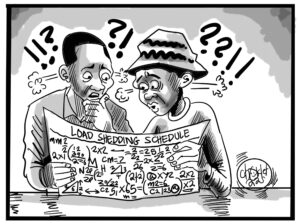Vice-President Inonge Wina says government still faces challenges in quantifying the exact amount of gold produced in Zambia due to huge numbers of illegal miners scattered across the country.
Responding to a question from Senga Hill PF member of parliament Kapembwa Simbao, who wanted to know how much gold would be mined in the country going forward, Vice-President Wina said gold quantities in the country were not yet known because of illegal mining engulfing the sector.
“Mr Speaker, there is a lot of gold mining going on in the country, but it has been undertaken by illegal miners, as we call them these days. There is a lot of artisan mining in areas in Eastern Province, like Vubwi, Petauke, and in Lunao Valley, in Mkushi and many other areas. So, government has taken interest in what is going on in the mining of gold and ZCCM-IH is taking stock to investigate the issue of gold mining in Zambia,” Vice-President Wina said.
“We know that in Mwinilunga (District), new deposits have been discovered and they are already some artisan miners there, but government has sent security defence forces to secure security of the mines. Mr Speaker, the quantities are not yet well known because of the illegal nature in which this industry has been tackled. But before long, government will come up with the actual figures of gold mines in Zambia in various sectors, including the mining companies.”
Earlier, in a question for oral answer, Mbala PF member of parliament Mwalimu Simfukwe asked Mines Minister Richard Musukwa whether there were any companies that were mining gold in Zambia.
In response, Vice-President Wina said four mining companies in the country were mining gold.
Vice-President Wina also revealed that gold production dropped from 16,283Kg in 2017 to 7,790Kg in 2018.
“The following companies where producing gold in Zambia as of February, 2019; Kansanshi mines gold alongside copper; Mopani Copper Mines produces slimes containing gold; Konkola Copper Mines produces slimes containing gold; Kalumbila produces copper anodes containing gold. Gold production in 2017 and 2018 was as follows: in 2017: 16,283Kg of gold, in 2018: 7,790Kg of gold. The gold was not refined at the time it was exported. There is no refinery for gold in Zambia,” she said.
She said it was difficult for government to ascertain what led to the reduction of gold production last year.
“Mr Speaker, in the mining industry, the gold comes as a by-product from copper so depending on the quantities, the traces of gold in the copper cathodes, it is very difficult to [know] why there was a reduction from 2017 to 2019. Again, we have no figures here of how much copper was mined during this period and how much of that copper contained gold deposits,” she said.
“Government has come up with figures for 2017 and 2018 for gold that was mined by the mining companies, which means that government is keeping a record of the gold that is produced by these companies and ZRA (Zambia Revenue Authority) is devising mechanisms to ensure that the mining companies are accountable for not only copper, but gold and cobalt (which) are by-products of copper so that reasonable tax is given to government.”
And Vice-President Wina said the Ministry of Mines was currently scrutinizing would-be investors interested in establishing gold mines.
“Currently, the Minister of Mines is receiving some investors interested in gold mining and the licenses are being scrutinized to identify the right investors. Gold mining in Zambia in various sites was started by Zambian artisan miners who did the mining on their own and now they’re being put into cooperatives that will eventually become companies to run these small mines. However, bigger conglomerates are applying to the Ministry of Mines to obtain licenses to go into gold mining. I cannot give a time-frame to when actual big companies will start mining gold,” said Vice-President Wina.
“Government has taken interest in using gold to secure our reserves. That is why government has directed ZCCM-IH to ensure that the gold that will be discovered or will be produced in various sites should be sold to the Bank of Zambia so that this can be turned into bullion for our national reserves.”



















